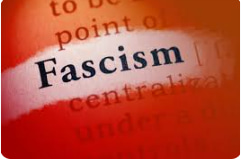Contents
That heavy word that we often hear in daily life, in the news or on social media, and is usually used as an insult: “Fascist!”. Well, have you ever wondered what this word really means, from which dark corridors of history it has emerged, and what makes a regime “fascist”? In other words, it wouldn’t be bad if we at least had an idea of what fascism is and what it is not.
Fascist regimes glorify the state by ignoring individual rights and freedoms. This understanding, which is based on the absolute authority of the leader, sees different ideas and identities as threats. Society is controlled with propaganda, censorship and police force. Fascism often tries to keep the people together with external enemy discourse, and this situation usually goes hand in hand with militarism.
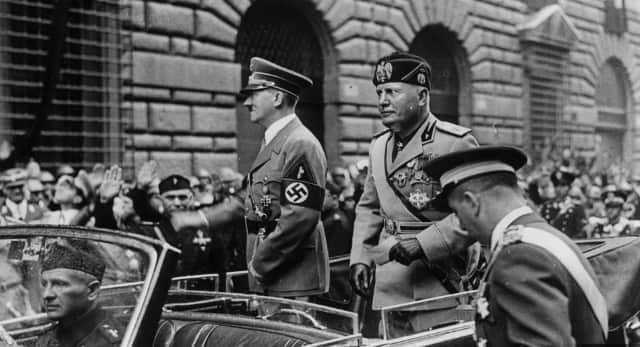
The rise of fascism is often directly related to economic crises, social unrest, and the people’s search for change. People’s search for security and stability can lead them to unite around a powerful leader like Hitler or Mussolini. This makes it easier for fascist ideologies to gain ground. However, history has shown that such governments oppress societies in the long run and cause great destruction.
In this article, we will approach this heavy and dark subject not with the boredom of a textbook, but with a curiosity that tries to understand what it is. We will see that fascism is much more than just “oppressive government“; it has its own ideology, birth story, and poisonous anatomy. Let’s get to know one of the most dangerous viruses in history more closely so that we can better understand its reflections today.
Definition and Historical Rise of Fascism!
For those who want to know briefly what fascism is, it should be noted that; in its simplest form; it is an authoritarian political ideology based on radical nationalism, where power is concentrated in the hands of a single leader and his party, all opposition is suppressed by force, and society and the economy are tightly controlled by the state. In other words, fascism is not only a “tough administration” but also a holistic worldview that completely ignores the individual in the face of the state and the nation, and rejects democracy and freedoms.

So how did this dangerous idea emerge? The seeds of fascism were sown in the great chaos and disappointment created by World War I. After the war, millions of people died in Europe, empires collapsed, and the economy collapsed. People had lost faith in liberal democracies that promised them stability and order. This disappointment and anger were much deeper, especially in countries like Italy, which could not get what they wanted from the war, and Germany, whose honor was broken by a heavy defeat. The severe consequences of the Treaty of Versailles also had an impact here.
In this chaotic atmosphere, a man came onto the scene in Italy: Benito Mussolini. Mussolini, who is considered the “father of fascism,” turned to radical nationalism after the war despite being a former socialist. He started his movement, which he called “Fascism,” inspired by the word “fasces,” which meant a bundle of axes and sticks wrapped in a strap, which was a symbol of unity and power in the Roman Empire. He intimidated his opponents by creating violence and terror in the streets with his militia forces called the “Blackshirts.” In other words, his is the first name we will find when asking what fascism is.
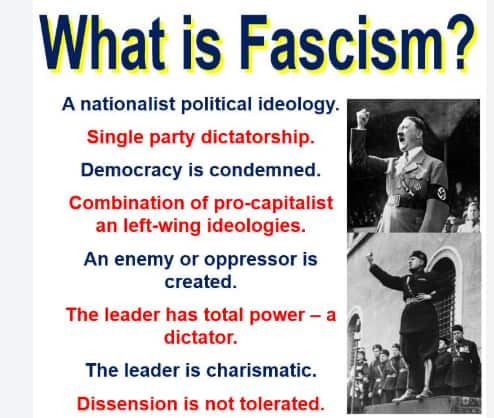
The March on Rome and Mussolini’s Reign
The greatest appeal of fascism at the time was that it promised simple and powerful solutions to complex problems. Against the economic crisis, political instability and most importantly communism, which was seen as a threat in those years; it addressed the people with the slogan of “a strong leader, a single party, iron discipline and national unity”. It said that it would give the people back their lost honor, revive the nation and crush all enemies. These promises were extremely attractive to the desperate masses.
Interestingly, Mussolini did not seize power through a bloody revolution. When he organized the famous “March on Rome” in 1922, the king and the elites at the top of the state were so afraid of a communist revolution that they practically handed power over to Mussolini with the idea that he would restore order. This was one of the most painful examples of how fascism could grow from within the existing order, feeding on its fears.
The Basic Ideas and Characteristics of Fascism
Although fascist regimes differ depending on the country they are located in, there are some basic and unchanging characteristics that they all share. These characteristics form the DNA of the answer to the question of what fascism is. Knowing these is of critical importance in understanding whether a government is sliding towards this ideology. The first and most basic characteristic is an extreme and aggressive nationalism (ultranationalism) that is held above all else.
In this understanding of nationalism, the “nation” is everything; the only meaning of an individual is to the extent that he serves the nation. Individual rights and freedoms have no importance. This ideology is usually based on a glorious and mythological past. The leader promises to revive that “lost golden age” for the nation. To this end, humiliating other nations, pursuing an aggressive policy against them, and irredentism are considered legitimate.
The sine qua non of fascism is the cult of a charismatic and unquestionable leader. The leader (referred to with titles such as “Duce” or “Führer”) is presented as an infallible, almost semi-divine figure who alone represents the will of the nation. His word is law, and any criticism of him is tantamount to treason. Propaganda mechanisms constantly pump the public with how wise, powerful, and far-sighted the leader is. The slogan “Mussolini is always right” is the clearest summary of this understanding.
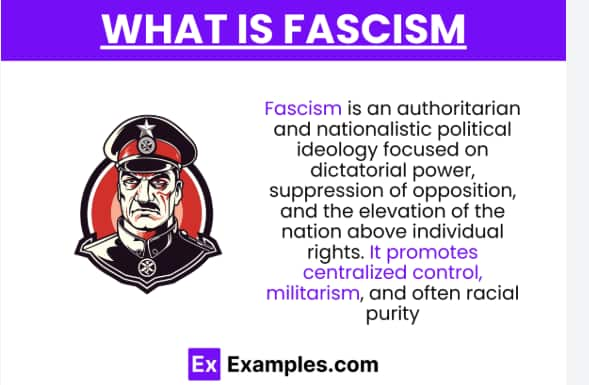
What is Fascism? Militarism and Totalitarianism
- Another fundamental characteristic is the celebration of militarism and violence. Fascism sees peace as a sign of weakness and decay. War, on the other hand, is considered a noble act that keeps the nation strong, eliminates the weak, and glorifies virtues. Violence against political opponents and “enemies” is not only a tool, but also a celebrated virtue. Military uniforms, magnificent parades, and the cult of discipline and warriorship permeate every aspect of society.
- Fascism is totalitarian in nature; that is, it seeks to control every aspect of life. All institutions of democracy are destroyed: opposition parties, unions, independent press, and civil society organizations are banned or placed under the control of the leader. Education, art, sports, the economy, and even people’s private lives are shaped in accordance with the ideology of the state and the party. The aim is to create a society that thinks in a single way, does not question, and obeys the leader.
History of Fascist Regimes in Italy and Germany
After understanding the theory of fascism, looking at the most well-known and destructive examples in history, namely Italy and Germany, allows us to see more clearly what this ideology means in practice. Mussolini’s Italy was the first laboratory of fascism. After coming to power, Mussolini established a totalitarian regime with the slogan “Everything is within the state, nothing is outside the state or against the state.” He concentrated all power in his own hands and either imprisoned or exiled his opponents.
He established a “corporatist” system in the economy, organized both employers and workers in state-controlled unions and banned strikes. He established youth organizations such as “Balilla” to raise young people with fascist ideology from an early age. His biggest dream was to revive the glory of the Ancient Roman Empire. For this dream, he pursued an aggressive and expansionist policy by invading countries such as Ethiopia.
Nazism in Germany, the other country that comes to mind when we ask what fascism is, was the most radical and deadly version of the ideology. The Nazi Party, led by Adolf Hitler, not only adopted all the basic features of Mussolini’s ideology (leader cult, totalitarianism, militarism), but also added a perverse racial theory. At the core of Nazism was the belief that the Germans, whom they called the “Aryan race,” were a superior race and that they should dominate or destroy all other “inferior” races, especially the Jews.
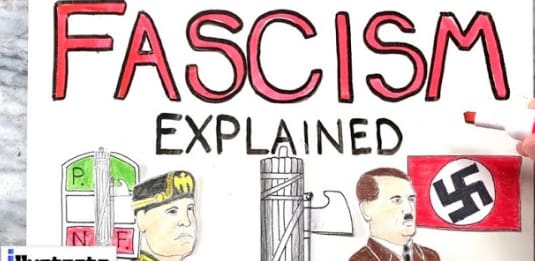
The Holocaust and Spanish Fascism
This racist ideology led to the Holocaust, the greatest genocide in history. The Nazis systematically sent Jews not only in Germany but also in all of Europe they occupied to concentration camps and death factories. In these camps, millions of people, including 6 million Jews, Roma, the disabled, homosexuals and political opponents, were massacred with an industrial savagery. The fundamental difference between Nazism and fascism, and what makes it even more dangerous, is this biological and racist basis.
When we ask what fascism is, we need to know that this ideology was not limited to Italy and Germany. Many regimes, such as General Franco‘s regime in Spain and Salazar’s regime in Portugal, had fascist characteristics. Although fascist regimes were defeated militarily at the end of World War II, they did not completely disappear as an ideology. Even today, ultra-nationalist, authoritarian and leader-cult-based movements in different parts of the world continue to remind us of the ghost of this ideology.
What is Fascism? List of Basic Features
As we have seen, fascism is much more than simple “oppression”; it is a poisonous cocktail of elements such as extreme nationalism, the cult of the leader, the glorification of violence and totalitarian control.
What makes it dangerous is that it emerges in times of chaos, uncertainty and fear, offering people simple but deadly solutions. History shows us that economic crises, social divisions and distrust of democratic institutions are fascism’s favorite sources of nutrition.
Therefore, learning about this ideology is not just a history lesson. It is also a civic duty. Understanding the circumstances of its birth, its characteristics and the terrible truth behind its promises is the best way to recognize the dangerous signs in today’s world and to remember why we need to hold on tighter to values such as democracy, human rights and pluralism.
Now let us list the basic features of fascism:
- Ultranationalism
- One-man and authoritarian leadership culture
- Suppression of individual freedoms
- Absolute state supremacy in all areas
- Prohibition or silencing of opposition
- Public control through violence and fear
- Widespread use of propaganda and censorship
- Militarism and war rhetoric
- Promotion of racist and discriminatory ideologies
- State intervention in the economy and corporatism
- Weakening or elimination of democratic institutions
